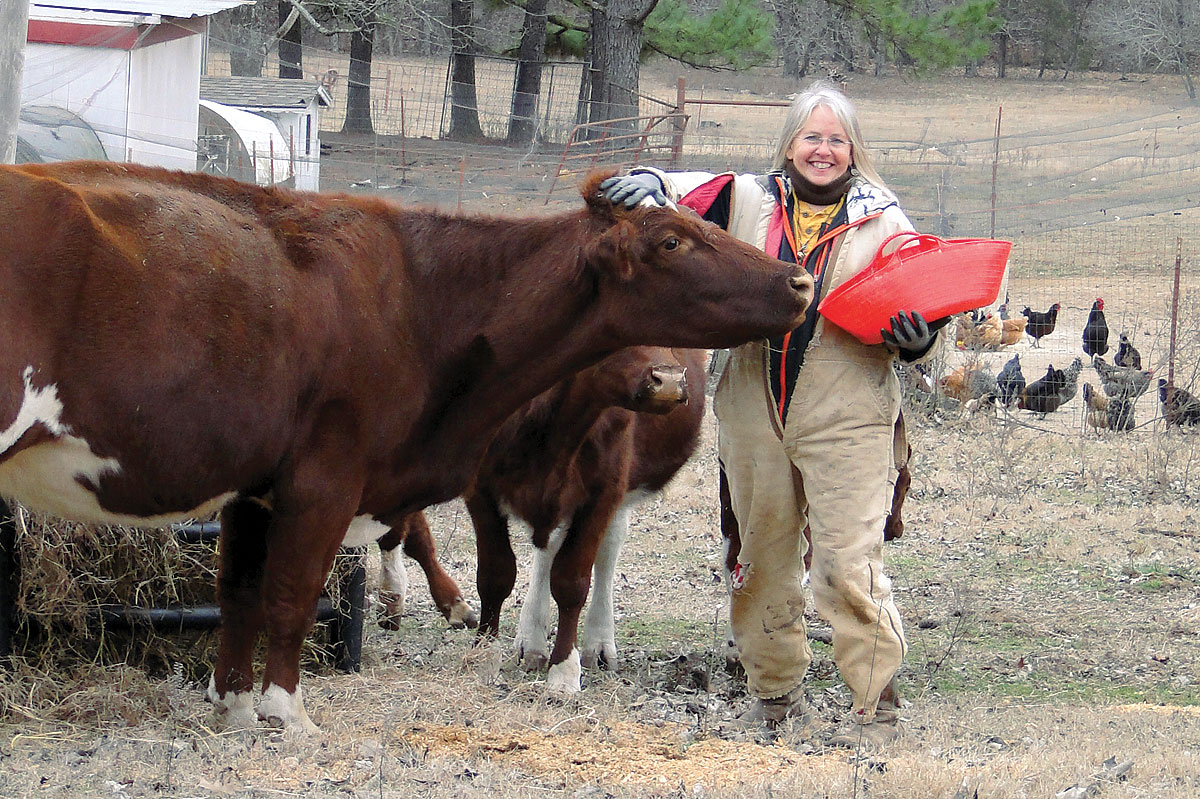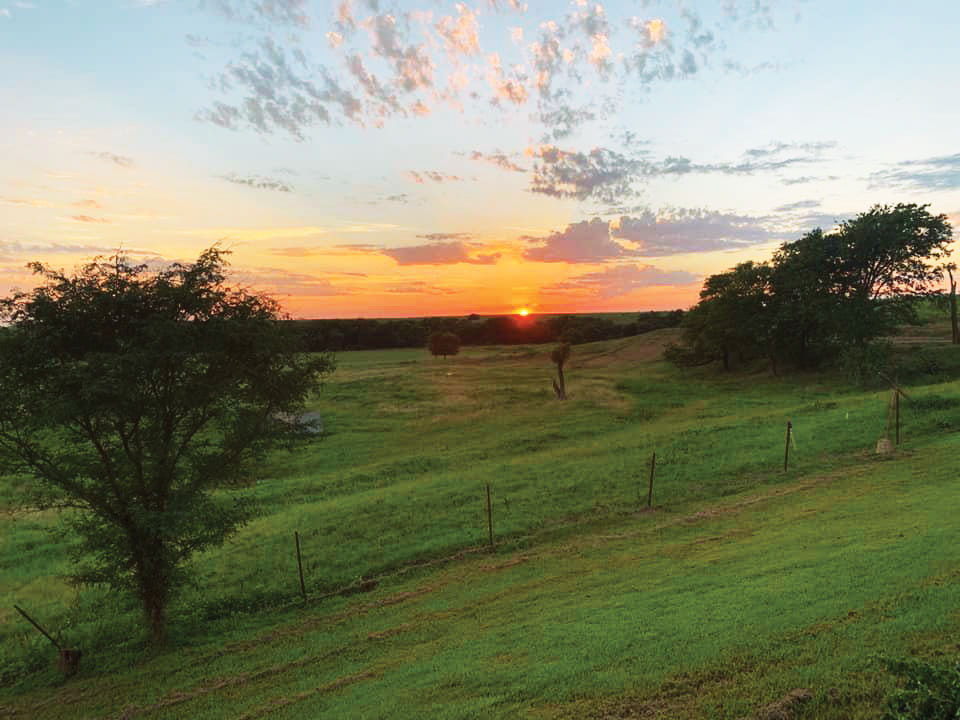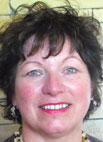
Opportunity sometimes knocks in strange ways. For Barbara Dene of Mulberry, Ark., opportunity knocked three years ago when a divorce radically changed her life.
“A few days ago, I suddenly realized I am exactly where I want to be and doing exactly what I want to do,” Barbara said.
Barbara owns and leases 100 acres, but has only 23 suitable for her cattle and chickens. Her income is derived from three sources, with the first being meat and produce production on Dene farms. Next is cooking those products under a product label of Three CG (Three Catholic girls). Third is a food truck called Sweet Tea Kitchen and Coffee Spot. She and her partners – Heidi Renfro, Mary Erickson and Cheryl Norton – strive to provide people with “healthier alternatives to everyday ingredients and foods.” This includes grass-fed GMO and antibiotic free with no added hormone Maine Anjou beef, as well as GMO and antibiotic free, free-range chickens. Finally, jarred fruit butters made with agave or honey with baked goods that are either gluten free or made from whole grains milled on the farm to ensure customers are getting exactly what they want. These goods are also sugar-free.
Barbara planned to obtain an animal science degree, but ended up working her way up in the retail food and drug industry while attending school. When she moved to Arkansas in 1994, she had a steep learning curve with her 20-year-old education as her only reference point.
She soon discovered, however, she had a “green thumb” when it came to raising animals.
Barbara’s animal adventure began with five ducks that rapidly turned into 250, more than she needed or wanted. Fortunately, someone came by and offered her $5 a duck and took all but a few. The next step in her animal evolution was buying a Holstein cow for raising calves. Then she started with five goats to clear land that soon became 220. She had Boer billies and hardy Spanish/Boer cross does.
“Unlike Texas, where I came from, Arkansas is lush and with an abundance of food. Those goats grew and propagated easily-too easily,” Barbara said. “While I still prefer goat burger to any other meat, the goats required too much maintenance.”
Her children loved the goats and were successful at showing them in competitions. They then transitioned to chickens as the next animals to show with Barbara more than ready.
Her children received 25 chickens each as 4-H projects, which required each child’s chickens be raised separately. Barbara’s experience with the chickens was the first thing that really caught her attention and the importance of raising animals the healthiest way possible.
Barbara considers raising chickens an art. During her first year raising chickens commercially, the chickens did not put on weight well. Ever the problem solver, Barbara searched once again for answers and learned how to adapt their environment to increase productivity.
“Seemed like I was cleaning them twice a day changing bedding,” she said.
Barbara also provided a sandpit where the chickens could clean themselves, as well as better shelter from the elements. That first year she struggled to raise 100 chickens, but raised 1,000 the second. Her “green thumb” and problem solving abilities were still at work.
One day, she and her 13-year-old son selected four mixed breed heifers. A problem popped up when they returned to the farm with the trailer and animals inside: they didn’t know how to get them out because those first heifers were untouched and mean. Then Barbara remembered her dad having the same problem with a bull. He subsequently tied him to a post under shelter for 30 days, feeding and watering the animal personally, while also exposing it to loud talk radio to become accustom to human voices, as well as his presence. She and the kids did the same with the four heifers, and they responded quicker than her father’s bull.
Barbara began studying the cattle industry and realized she needed at least a 25-animal herd to begin to make a profit. She wanted a breed that provided both milk and meat. She searched the internet and settled on Maine Anjou because they were a larger animal, but very docile.
After searching for the best genetics possible, she purchased three registered cows and a bull. When they were delivered, she had never actually seen a Maine Anjou in person and was taken aback by their actual size. She wondered how she was ever going to work with them. To her astonishment, completely undomesticated animals easily left the truck and just waited to see what she wanted to do next.
They were very approachable, though shy of being touched, something she believes is essential. Within three days and using the same treatment her dad had used, the problem was solved.
Barbara’s herd now consists of 21 animals; eight mommas, four heifers, one breeding bull and calves that take 30 months to mature on their grass-fed diets. The diet also includes natural grass hay Barbara purchases and then places in different parts of the pasture in order to seed the ground. She fertilizes by breaking up manure and is considering using a sorghum or milk-based fertilizer this year, if it becomes available. Her pastures are comprised mostly of fescue so she manages the height carefully to maintain animal health. While minerals are always available, protein supplemented minerals are only used when the weather is 18 degrees or colder.
“I learned through trial and error and survived by searching for what God had already put in front of me,” Barbara said.






